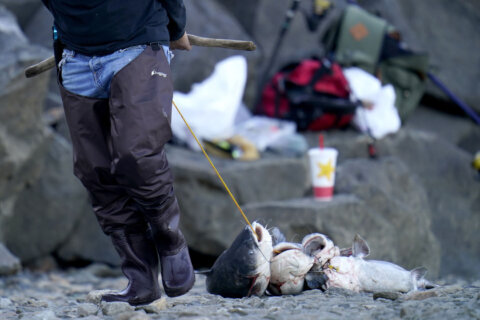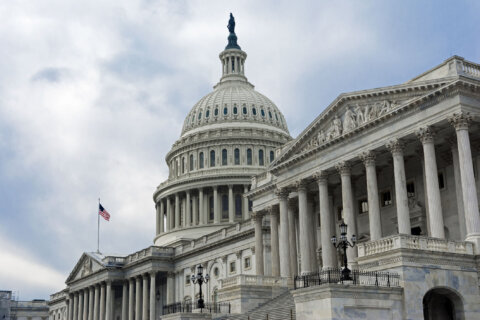This video is no longer available.
While there have been improvements, there remains a fragile ecosystem within the Chesapeake Bay. Among the growing problems are some of the animals that live and swim in those waters.
That’s because they’re not supposed to be in those waters but have found their way in and really enjoy it.
There are doubts in the state of Maryland that the invasive blue catfish will ever disappear. But the push is on to get it on more restaurant menus, dinner plates, and anywhere else that can keep the population manageable (if not eradicated) as they keep swimming north from the Virginia end of the Chesapeake Bay, eating almost everything in its sight.
“It’s kind of the perfect invasive species,” said Chris Jones, whose job with Maryland’s Department of Natural Resources is to focus on invasive species like the blue catfish and the Chesapeake Channa, also known as the snakehead fish.
People don’t necessarily think of a blue catfish as native to the Chesapeake region, so when it’s probably not something one thinks about ordering. The state is hoping to change that.
Maryland is launching a campaign aimed at making the blue catfish more popular as a meal. The effort includes publishing recipes and marketing that says your dinner makes a difference for the Bay and those who work on it.
At the same time, Jones is aware that the blue catfish problem probably can’t be eaten away, no matter how many you order, so they’re also investigating future uses of the blue catfish in pet food and for fertilizing compost.
“This is a great, delicious meat that can be cooked so many different ways and (for) so many different things, and provide a good, nutritious, delicious meal for folks,” said Jones. “This is a fish that’s commercially, recreationally viable. They’re delicious. They are abundant as they can be, and it provides a unique opportunity for watermen to make a living with something different, to fill some income or subsidize some of the other stuff that they tend to do.”
Scientists have found lots of animals, including rock fish, inside the bellies of blue catfish. But one of their favorite things to eat are the blue crabs that swim on the bottom of the Chesapeake Bay and its tributaries.
“Right out here in this Chester River, we didn’t have blue catfish five years ago. Now, we have commercial fishery based in the river. So it’s not very good,” said Jason Ruth, the owner of Harris Seafood Company on Kent Island. “I don’t know where the future is going to be in it, but we need to at least get it in check so they can keep the balance of all the other species that are here as well.”
Next door to the processing plant that Ruth operates sits Harris Crab House. And on the menu is a fried blue catfish po’boy sandwich.
“The fish is great,” said Ruth, who said it’s similar to perch, which are in abundance in the bay and also among an angler’s favorite to eat, though also really easy to catch. “It’s a nice, beautiful white fish. It’s flaky. It cooks up easy. It’s a cheap protein, and that’s what you need in today’s time.”
He hopes the fish will be featured on even more menus, and the state is trying to help.
“They are estimating that blue catfish are eating about 400 metric tons of blue crabs in a year, which is about 4% of the harvest of the state of Virginia,” said Jones. “But then consider that harvest crabs are five inches or larger. These blue catfish are working on juvenile crab. So 400 metric tons of juvenile crabs is a significantly larger quantity of crab than eating five inch, six inch, eight-inch crabs. So it’s become a huge problem.”
Get breaking news and daily headlines delivered to your email inbox by signing up here.
© 2024 WTOP. All Rights Reserved. This website is not intended for users located within the European Economic Area.








